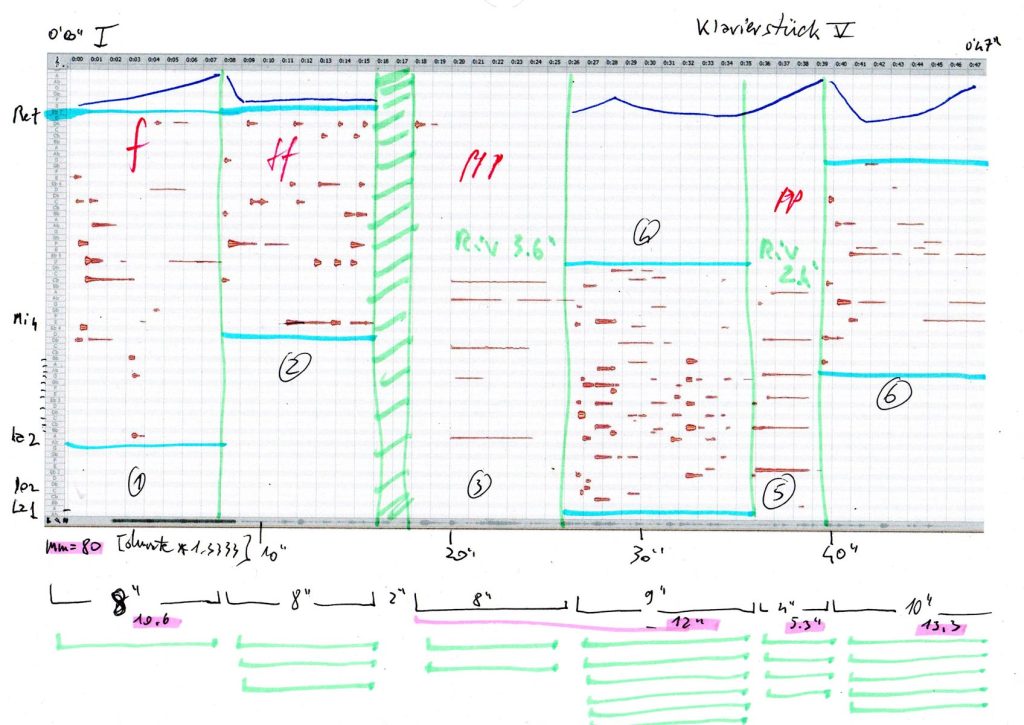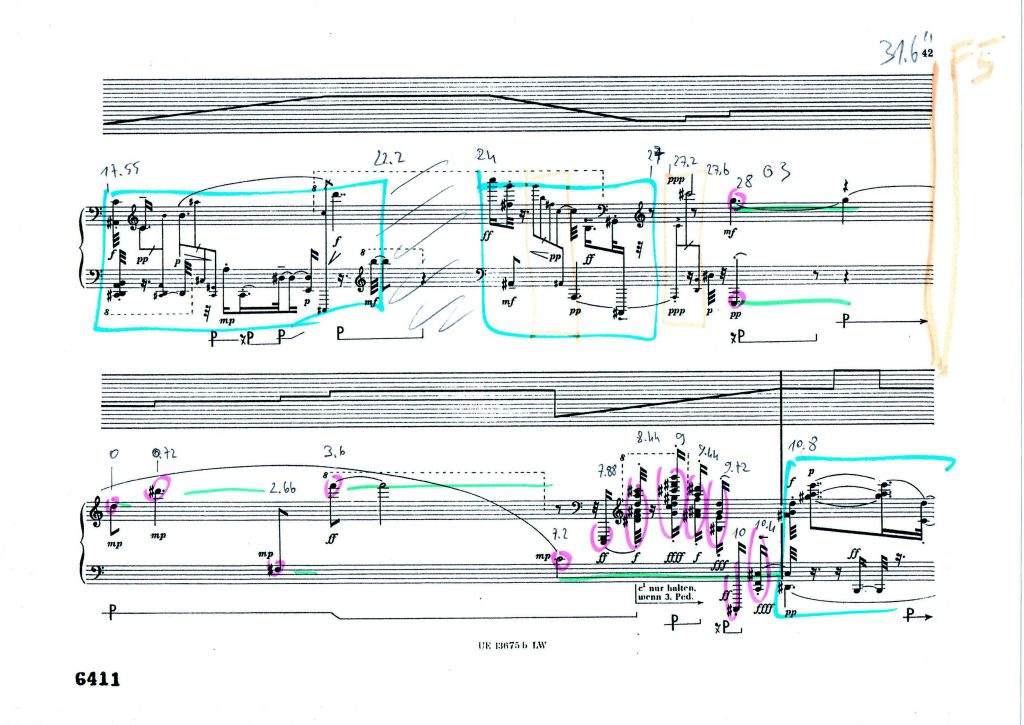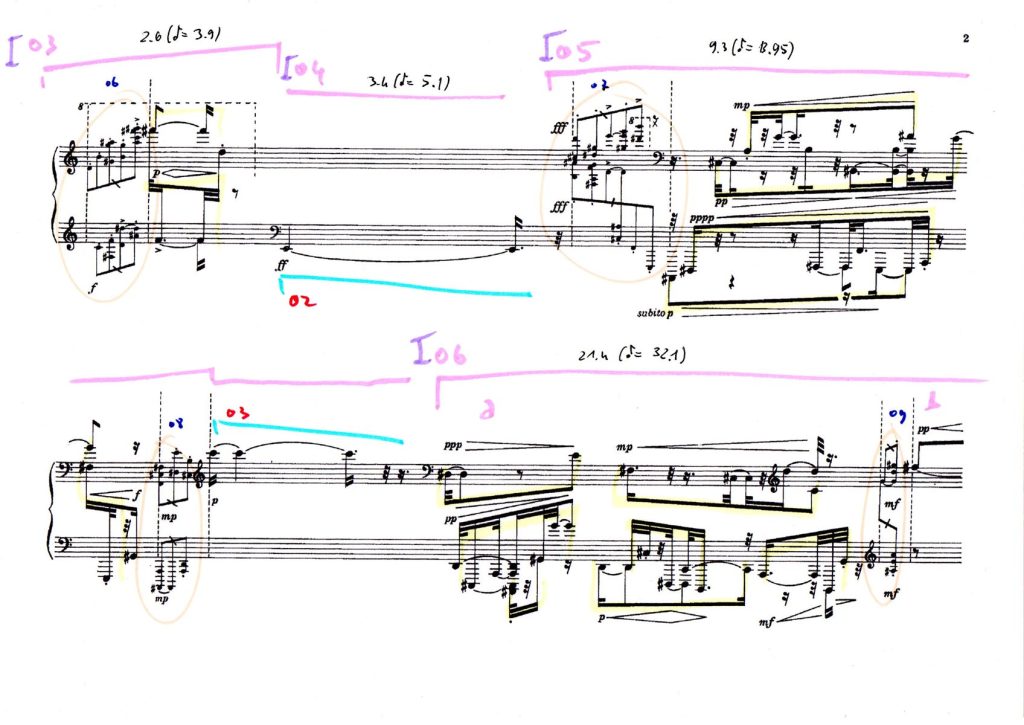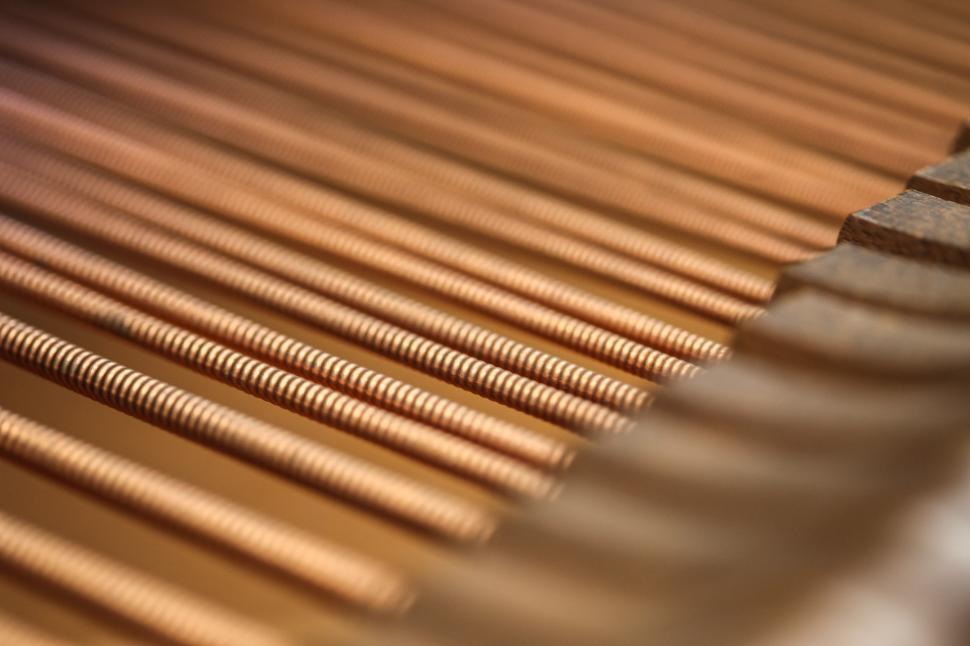Studi I-IV (2020-2021) electroacoustic music [6′ 57″]
Premiered at Teatro Akropolis for GOG, Genova, May 11th 2023
Studio V (2020-2021) electroacoustic music [6’ 21”]
Premiered at Teatro Akropolis for GOG, Genova, May 11th 2023
Studio VI (2021) electroacoustic music [25’ 49”]
Premiered at XXIII Colloquio di Informatica Musicale, Auditorium della Mole Vanvitelliana, Ancona, October 26th 2022
Studio VII (2020-2021) electroacoustic music [7’ 02″]
Premiered at REF Resilience Festival, Foggia, Teatro della Piccola Compagnia Impertinente, September 26th 2021
Studio VIII (2020-2021) electroacoustic music [1’ 45”]
Premiered at Teatro Akropolis for GOG, Genova, May 11th 2023
Force without law has no shape,
only tendency and duration.
David Foster Wallace
My Studi I-VIII originated from a personal reading of Karlheinz Stockhausen’s Klavierstücke I-VIII. These piano works revolve around the electronic experience of Elektronische Studie I and II. If the Klavierstücke I-IV (1952-53) represent a sort of sketches of the electronic pieces to come, the Klavierstücke V-VIII (1954-55) reveal a new attention to time which at the same time ‘stretch’ the form according to “statistical form criteria” and allows the author to build different timbres (almost in competition with the electronic ones he had worked on for 18 months) that emerge from the constant use of resonances produced by the silent pressure of the keys.
In my studies, all realized with CSound, I wanted to recreate the electronic sound of those years: : in its main morphology so close to that of piano sounds (due to sharp cuts in the magnetic tape) and in its ‘color’ – mainly obtained thanks to the convolution with the impulse response of the EMT 140 plate reverb, the one used by Stockhausen for Kontakte (thanks to Martino Marini for its IR recordings).
For each study, or group of studies, I have adopted spectral generations and different behaviors in the ‘bad copying’ of the Klavierstücke, but always conceiving each sound as a momentform whose duration and entry delay are unpredictable, and within which it is sometimes possible to hear the barely hinted echo of an acoustic composition.
Studi I-IV (which must all be performed together): resonant filtering of short distorted samples of ethnic music with various functions, gestures and temporal distribution as similar as possible to those of Klavierstücke I-IV, echoes of ethnic music.
Studio V: physical models applied to audio functions produced by a Julia set (implemented in CSound by Hans Mikelson, 1999), notes generated with Cmask (Andre Bartetzki, 1997) to approximate the density and dynamics of Klavierstück V, echoes of classical music.

Studio VI: each sound is the sum of a three-fold ‘image’ obtained with convolution (long decay piano sounds) of Julia set spectrum, squarewaves, piano attacks. The long decay piano sounds are actually the deconvolution of original piano tones with selected short piano attacks; the result is a kind of RM piano. All the piano sounds are sampled from the David Tudor III version of Klavierstück VI. Following the Stockhausen’s idea of ‘satellites’ and main sounds, I wrote an algorithm to serially generate all the parameters and formal organization. Echoes of vocal music. I wish to thank Pascal Decroupet for giving me access to his working sheets for “First sketches of reality. Fragmente zu Stockhausen (Klavierstück VI)”.

Studio VII: physical models applied to audio functions produced by a Julia set. Its structure arises from an approximate analysis of the events in Klavierstück VII, identifying three morphological types: fast arpeggios (piano), long single sounds, sounds with delayed partials (slow arpeggios). Echoes of music from Stockhausen.

Studio VIII: physical models applied to audio functions produced by a ring-modulated Julia set with random step functions and transposed with Hilbert transform. Its structure comes from an approximate analysis of the events in Klavierstück VIII, identifying three morphological types: fast arpeggios of chords, long single sounds, sounds generated by probabilistic distributions over several ‘voices’. Echoes of free jazz.


